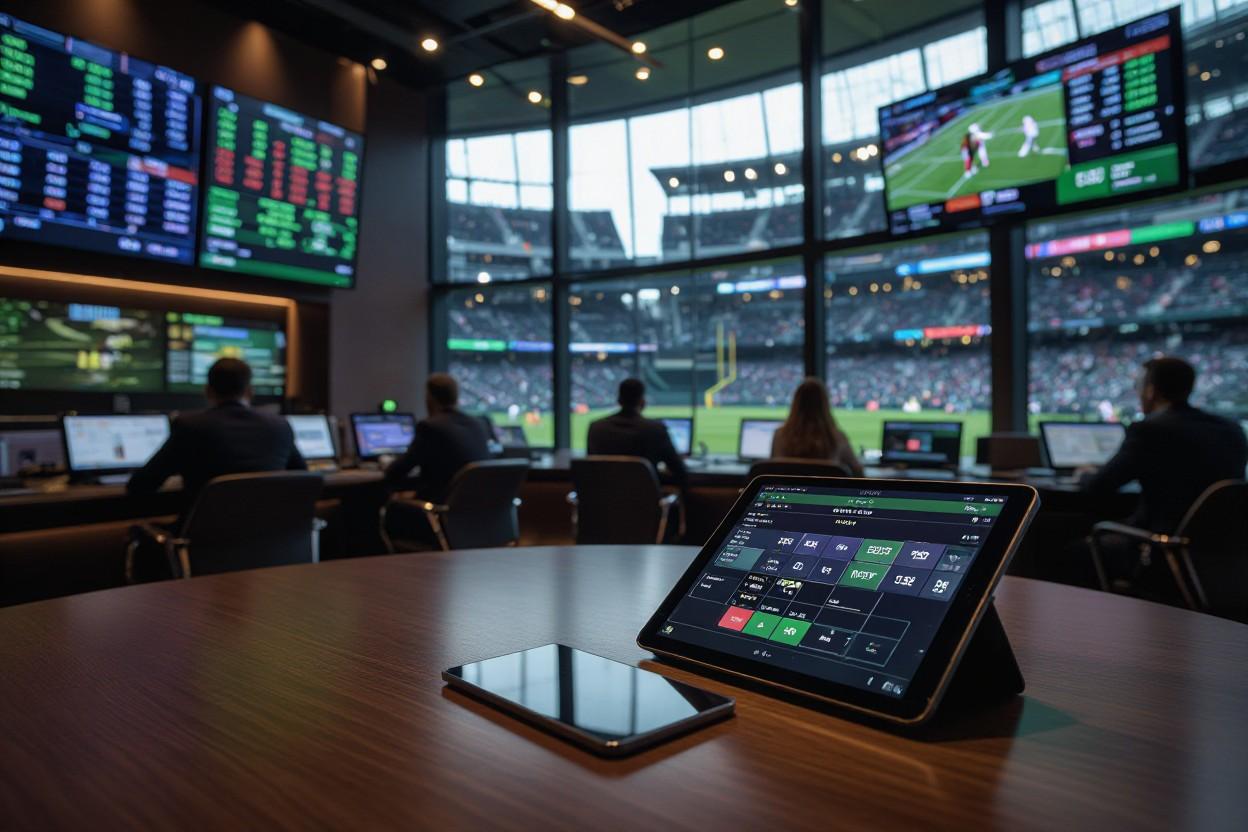
The Role of Data Science in Modern Sports Betting
Most bettors now rely on analytics and machine learning, and you should know how models process data, identify patterns, and estimate probabilities. Data science turns large datasets into actionable insights, but it can hide uncertainty and create overconfidence—be alert to model risk. When applied correctly, predictive analytics gives your betting strategy a measurable advantage while reinforcing responsible bankroll management.
The Transformation of Sports Analytics
Data now informs everything from scouting and match preparation to live odds adjustments, and you feel the shift when models replace hunches at the bookmaker’s desk. Landmark moments — Bill James’ sabermetrics and the Oakland A’s “Moneyball” era — pushed teams and sportsbooks to adopt systematic analysis. Rapid data commercialization means your competitive edge can vanish quickly as public models spread, while proprietary tracking and ML pipelines deliver the positive payoff when you exploit niche datasets others overlook.
Historical Context: From Guesswork to Data-Driven Insights
Bill James and early sabermetricians turned anecdote into measurable metrics, and bookmakers transitioned from ledger-based odds to statistical models like Poisson for soccer and Elo-derived ratings for team strength. Michael Lewis’ Moneyball (2003) highlighted how the 2002 Oakland A’s used on-base percentage and analytics to beat richer teams, showing you that analytical advantage often starts with a simple, repeatable metric rather than intuition.
Key Technologies Shaping Today’s Analytics Ecosystem
Player-tracking systems, optical cameras, RFID chips and event feeds from providers like Sportradar and Opta power real-time models you can deploy; the NBA’s SportVU rollout (public data from 2013) and the NFL’s Next Gen Stats (launched 2016) gave analysts high-frequency spatial data that changed valuation methods. Machine learning frameworks and cloud compute make it feasible for you to run complex simulations and update lines in minutes.
Sensor and compute stacks now define the frontier: optical tracking (SportVU/Hawk-Eye) provides x,y coordinates at tens of frames per second, while RFID and GPS/IMU devices capture velocity and acceleration for every player. You’ll use feature-rich event feeds (Opta, Stats Perform, Sportradar) combined with tabular models like XGBoost for prediction and neural nets (TensorFlow/PyTorch) for spatial-temporal tasks; reinforcement learning and Monte Carlo methods simulate in-play outcomes. Cloud platforms (AWS, GCP, Azure) plus streaming tech such as Kafka let you process millions of events per day and push odds updates with sub-second latency. Beware of overfitting to noisy tracking signals and of edge erosion as public models popularize patterns; conversely, your ability to integrate proprietary data — unique camera angles, custom tracking, or club-level wearables — often generates the most sustainable return.
The Intersection of Algorithms and Betting Markets
Algorithms now act as both scouts and market makers, ingesting live feeds, player-tracking data, and public bets to price risk in milliseconds. You’ll see high-frequency traders and syndicates exploit micro-edges while sportsbooks use automated market-making engines to balance exposure; typical bookmaker overrounds range from about 105–110%, creating a built-in house margin. That constant feedback loop pushes markets toward efficiency but also amplifies model drift and information asymmetry when new data sources appear.
Machine Learning Models: Predicting Game Outcomes
You can build predictive stacks using logistic regression for binary events, gradient-boosted trees (XGBoost/LightGBM) for feature-heavy problems, and deep nets for spatio-temporal tracking data; the 2019 NFL Big Data Bowl showed how tracking inputs boost play-level accuracy. Feature engineering—expected goals (xG), rest days, travel, and matchup-adjusted ratings—often yields larger gains than model complexity. Guard against overfitting and data leakage, since a 1–2% miscalibration can erase your edge.
How Odds Are Calculated: The Data-Driven Approach
Calculation begins by converting model probabilities into implied odds, then inflating them to include the operator’s margin (vig); many books target an overround of 105–110%. You’ll see Poisson and Elo hybrids for soccer and tennis, Monte Carlo simulations for season markets, and ensemble blends to smooth variance. Adjustments follow for liquidity, correlated liabilities, and sharp-money signals before lines are published.
In practice, sportsbooks run ensembles—often 5–20 models—and weight them by recent calibration errors, reserving live models for in-play pricing. You would expect initial lines to be set by model consensus, then nudged by trader judgment and exposure metrics: a sudden volume on an underpriced side triggers hedging and odds movement. Pinnacle-style sharp markets typically exhibit margins near 2%, while retail markets often sit at 6–8%; those differences matter if you’re trying to beat the market. Risk teams simulate liabilities with Monte Carlo to size limits and use hedging or layoff bets when concentration exceeds thresholds, so relying solely on raw model outputs without accounting for bookmaker adjustments exposes you to execution and liquidity risk.
Player Performance and Injury Analysis
You tap into player-level telemetry — GPS, accelerometers, heart-rate and force-plate tests — that produce tens of thousands of data points per match, letting you quantify form, fatigue and risk with far greater granularity than box scores. Bookmakers and trading models already shift lines when these signals show degradation: a star player’s sudden workload spike or missed high-speed runs can change implied win probability by up to 10–15%, creating value opportunities if your models react faster than the market.
Evaluating Player Metrics: A New Era of Insight
You should build models that combine traditional stats with advanced metrics like xG, xA, BPM, and WAR to separate luck from skill; xG, for instance, assigns a shot-quality probability and has been shown in multiple studies to improve match-prediction accuracy by roughly 5–8% compared with raw goals. Blending per-play metrics with stability measures (test–retest reliability ~0.6–0.8) helps you weight short-term noise versus persistent ability in betting models.
Utilizing Predictive Models for Injury Prevention
You can predict short-term injury risk by feeding acute:chronic workload ratios, sleep and HRV, age and prior injuries into models; when the acute:chronic workload ratio exceeds 1.5, many datasets show injury risk can roughly double. Teams that implemented structured load management and predictive monitoring have reported injury reductions of up to 20–30%, turning health analytics into both performance and betting advantages.
Deeper work uses survival analysis, gradient-boosted trees and recurrent neural nets to model time-to-injury and short-term hazard; typical model performance ranges from AUC ~0.65–0.85 depending on sport and data richness. You must engineer features like daily high-speed running (>5.5 m/s), decelerations, HRV drops and subjective wellness, apply rolling windows (7–28 days) and address label imbalance with stratified sampling or cost-sensitive loss. Be aware of real-world constraints: small injury counts per player, concept drift across seasons, and the trade-off between false negatives (missed injury risk) and false positives (unnecessary rest that hurts lineups). Finally, plan governance: secure device telemetry, anonymize identifiers and document model explainability (SHAP or LIME) so you can justify interventions to coaches and extract betting edge without exposing sensitive player privacy.
Behavioral Economics in Betting Strategies
Public sentiment and cognitive biases regularly create measurable mispricings you can exploit: betting exchanges often see lines move 1–3% after heavy public activity, while sharp money tends to correct those moves within hours. You should track volume spikes, money percentages, and closing-line shifts to separate noise from genuine inefficiency; ignoring these signals can leave you exposed to dangerous bankroll swings when you follow herd behavior instead of value.
The Psychology of Betting: Influences on Decision Making
Loss aversion and the gambler’s fallacy warp your choices: people feel losses about 2.25× as intensely as gains, so you may under-bet favorites after a loss or chase longshots to recoup, degrading ROI. Anchoring to opening odds and overconfidence after streaks push you toward suboptimal stakes; you can counteract this by using objective stake-sizing rules (e.g., fractional Kelly) and logging every decision to spot recurring biases.
Understanding Market Movements: The Behavioral Edge
Sharp bettors exploit predictable public overreactions—favorites frequently receive disproportionate volume, producing temporary value on underdogs and alternate markets; you can capture edges when you spot early 0.5–2% moves caused by smart money. Monitoring closing line value (CLV) and pregame liquidity on exchanges like Betfair helps you quantify whether your model is truly extracting value or merely tracking noise.
Digging deeper, you should combine real-time market feeds with sentiment indicators: track money percentages (e.g., public skew above 70%), watch for intra-day line drift, and correlate those with historical post-move outcomes. A practical tactic is to backtest rules that trigger when volume-induced line shifts exceed a threshold (say, >1%) and hold until market stabilizes; teams that routinely beat the closing line by a measurable margin tend to show persistent positive ROI, so use CLV as your primary performance check.
Regulatory Challenges and Ethical Considerations
Navigating Compliance in a Data-Rich Environment
GDPR enforcement (with fines up to €20 million or 4% of global turnover) and the post‑PASPA expansion—where over 30 US states now authorize sports betting—force you to build auditable data pipelines, consent logs, and robust KYC/AML controls. Integrating player‑level telemetry with identity verification requires strict retention policies, encrypted storage, and provable lineage so regulators can trace model inputs. High‑profile breaches like the 2019 MGM incident (affecting ~10.6 million records) show how operational lapses translate into compliance and reputational risk.
The Responsibility of Transparency in Betting Practices
Operators must make algorithmic decisions auditable and explainable to both regulators and customers, aligning with standards such as the UK Gambling Commission’s LCCP on fair treatment and clear customer communication. Publishing metrics like RTP or model fairness audits increases trust; you should expect regulators to demand documentation—model cards, validation reports, and remediation plans—especially when automated pricing or risk scores directly affect customer funds.
Practical transparency measures include third‑party audits, public summaries of model assumptions, and customer‑facing explanations for risk interventions; these reduce disputes and legal exposure. Maintain versioned model documentation, log feature importance, and produce counterfactual examples so you can show why a bet was limited or an account flagged. Opaque systems risk discriminatory outcomes and regulatory fines, while clear disclosures can be a competitive advantage in regulated markets.
Conclusion
Ultimately, data science transforms how you approach sports betting by turning raw statistics into predictive models, sharpening your edge, and helping you manage risk and bankroll more systematically. By applying machine learning, probability theory, and real-time analytics, you can identify inefficiencies, make evidence-based decisions, and adapt strategies as markets shift. Embracing data-driven processes enhances discipline and helps you balance expected value with responsible wagering.
